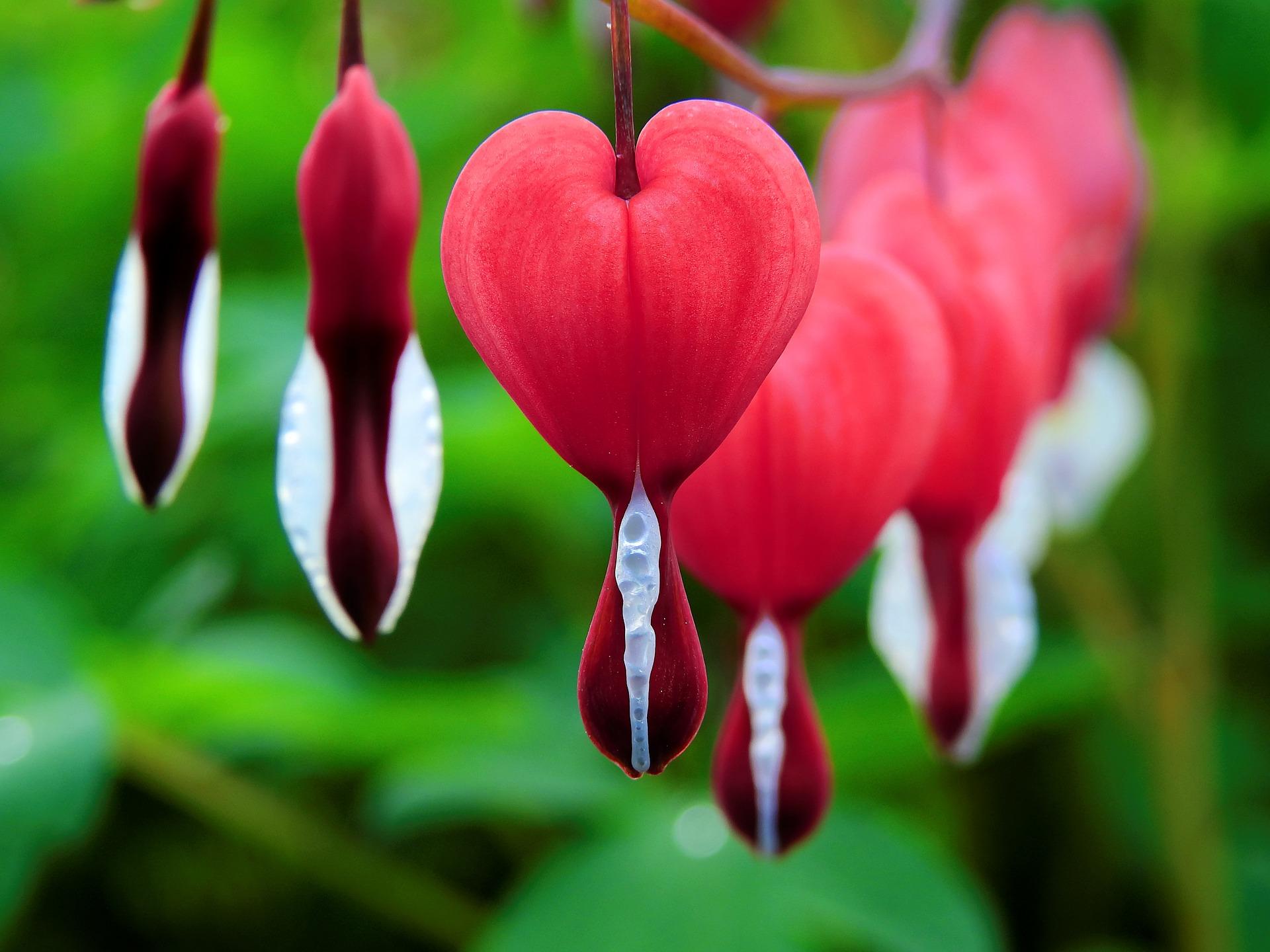Discover the Bleeding Heart Flower Meaning and Facts. From their delicate beauty to cultural significance, explore the enchanting traits.
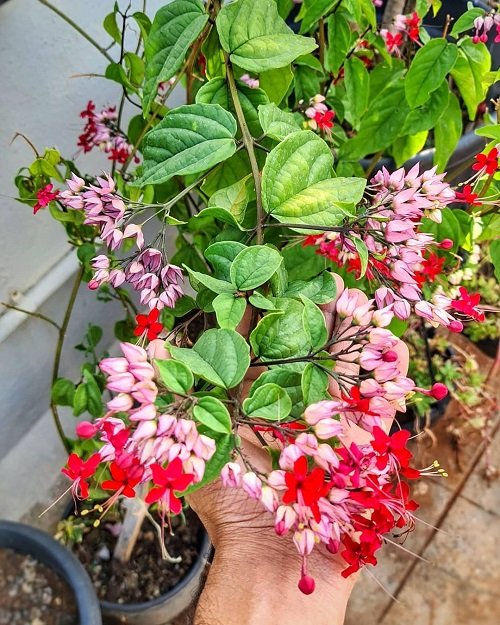
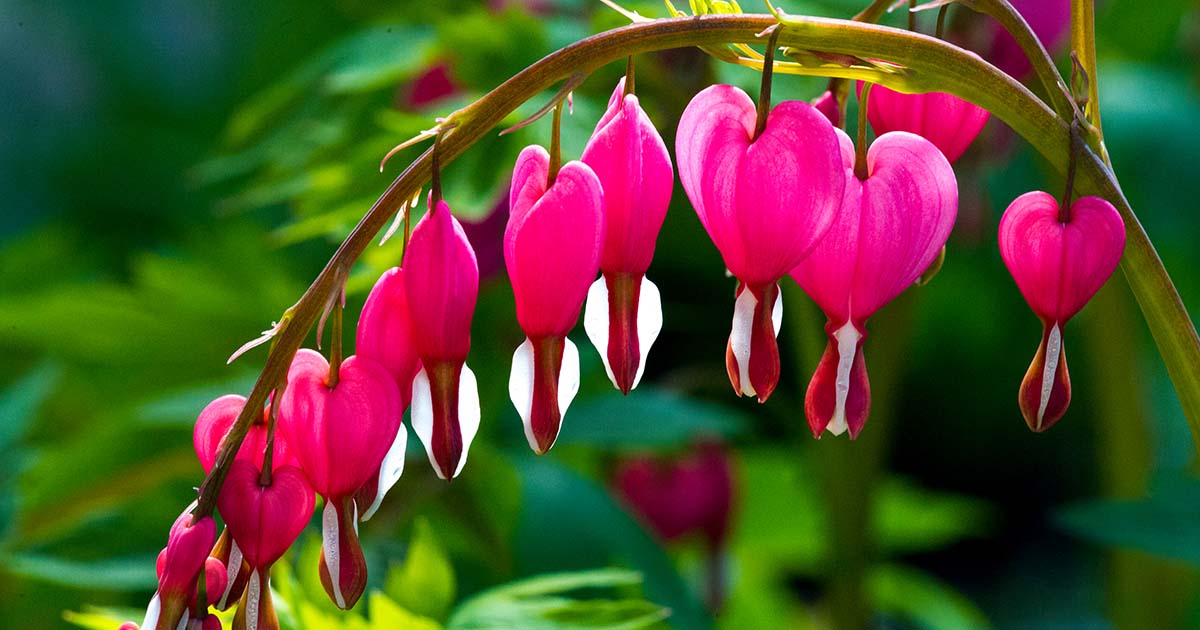
1500sqft_gardener
In this article, we will delve into Bleeding Heart Flower Meaning and Facts, uncovering intriguing details about the characteristics and cultural significance of these flowers.
Here are Splendid Vines with Heart Shaped Leaves
Bleeding Heart Flowers Plant Information
Before we dive into bleeding heart flower meaning and facts, let’s know a bit about them. These flowers are part of the Papaveraceae family and go by other common names such as lyre flowers, Dutchmen’s breeches, and locks and keys.
This perennial plant features powdery green leaves in a rosette shape. Certain variations of the bleeding heart also exhibit fern-like foliage.
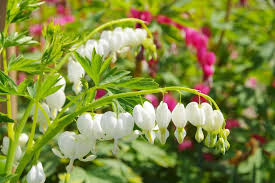
Bleeding heart plants bear a row of pendant flowers gracefully hanging from arching stems. These blooms measure one to two inches in length and captivate with their unique appearance. Each flower consists of two pink, heart-like petals that slightly puff out or form a small pouch, resembling charming miniature lanterns.
Peeking from underneath these delightful “lanterns” are two small, white inner petals and a stamen, creating the illusion of delicate droplets dripping from the lantern-like blossoms.
Read about Pansy Flower Meaning and What it Symbolizes here
History of Bleeding Heart Flowers
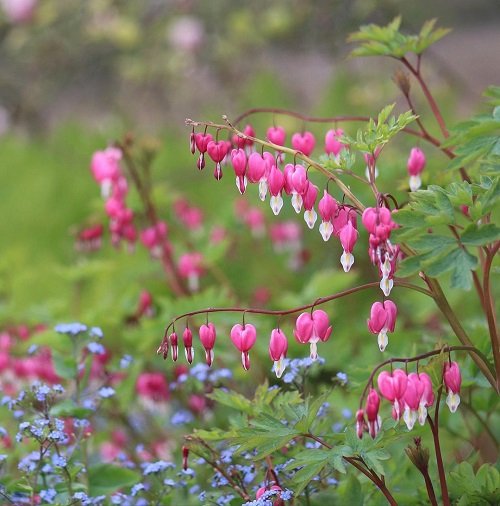
emma_crawforth
For centuries, people are growing these flowers in northern China, Japan, and Korea. However, it was in the 1800s that these plants made their way to Europe, thanks to the efforts of Robert Fortune, a renowned Scottish botanist.
The year 1846 marked a significant turning point for the popularity of bleeding hearts in English gardens, as the Royal Horticulture Society brought back these enchanting plants from their exploratory journey to the East.
In the years that followed, bleeding heart flowers gained immense popularity as cherished ornamental additions to spring gardens in temperate regions of North America and Europe.
Learn about Lotus Flower Meaning and Symbolism here
Popular Types and Species
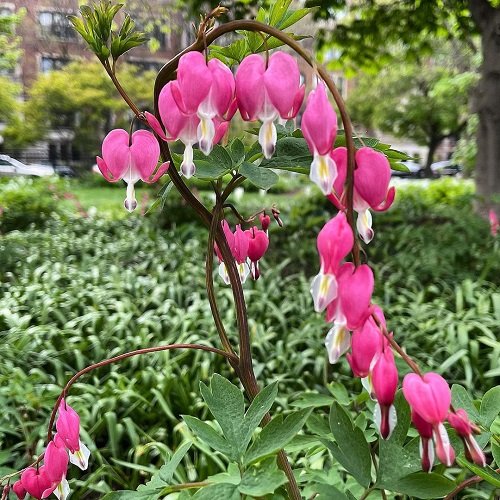
bccapture
The common bleeding heart, scientifically popular as Lamprocapnos spectabilis, displays charming pink petals with a white “drip” accent. In addition to the common variety, there are various cultivars available, each with its own unique characteristics.
- Alba: This heat-tolerant variety showcases elegant white flowers.
- Amore Pink: Compact in size, it boasts delicate soft pink blooms.
- Amore Rose: Distinctive for its fern-like blue-green foliage, this cultivar adds a touch of unique charm.
- Gold Heart: Featuring vibrant green-gold foliage, it stands out in any garden.
- King of Hearts: A compact cultivar that presents rosy pink flowers, adding a regal touch.
- Luxuriant: This heat-tolerant variety delights with its long flowering period.
- Valentine: Sporting scarlet outer petals and white inner petals creates a striking visual contrast.
- White Gold: Popular for its beautiful white blossoms, this cultivar adds an elegant touch to any landscape.
Discover the names of the best indoor vines here
Bleeding Heart Flower Meaning and Facts

close_2_nature
According to the language of flowers, the bleeding heart is a symbolic representation of intense love and romance. Its flowers are also a symbol of compassion and the capacity to express emotions openly. Specifically, white bleeding hearts symbolize purity.
The original name of the bleeding heart plant, Dicentra spectabilis, derives from Greek roots meaning “two spurs” and “spectacular.” The subsequent introduction of the new genus Lamprocapnos brought about a name change. Lamprocapnos stems from Greek words meaning “shining” (lampros) and “smoke” (kapnos), resulting in a name that captures the essence of this beautiful plant.
- While the Pacific Bleeding Heart (Dicentra formosa) is toxic, interestingly, its roots possess pain-reducing properties that aid in alleviating discomfort from sprains and bruises.
- It takes around 450,000 Pacific Bleeding Heart seeds to make up one pound!
- These plants exhibit resistance to fire, adding to their hardiness. Notably, in 2008, the Dicentra genus was ranked 19th among “Top Spring Garden Plants” by The Telegraph.
- Native American Indians use Pacific Bleeding Heart for various medicinal purposes, including treating coughs, stomach aches, bee stings, and dizziness.
- This plant is attractive to hummingbirds and is also deer resistant.
- Its seeds produce elaiosomes, a fatty white substance that lures ants.
- The Pacific Bleeding Heart is known for its ability to calm the nerves of individuals who have undergone frightening experiences.
- The plant is poisonous if ingested, as it contains isoquinoline alkaloids that can cause vomiting, diarrhea, and heart failure in humans and animals. It is important to handle the plant with care and keep it away from children and pets.



